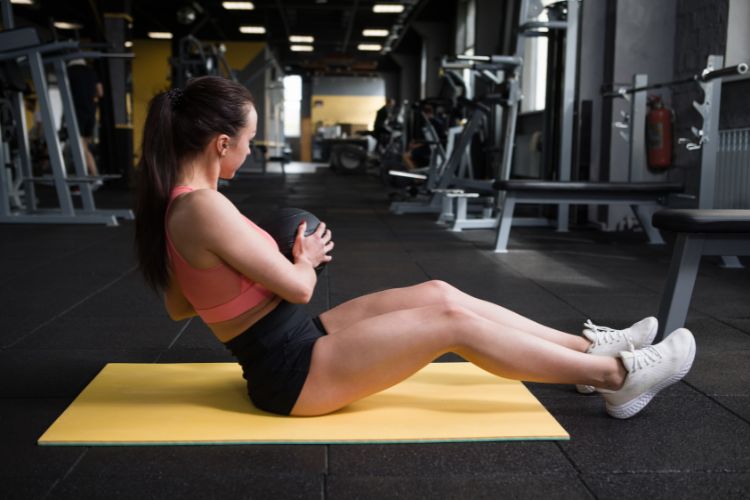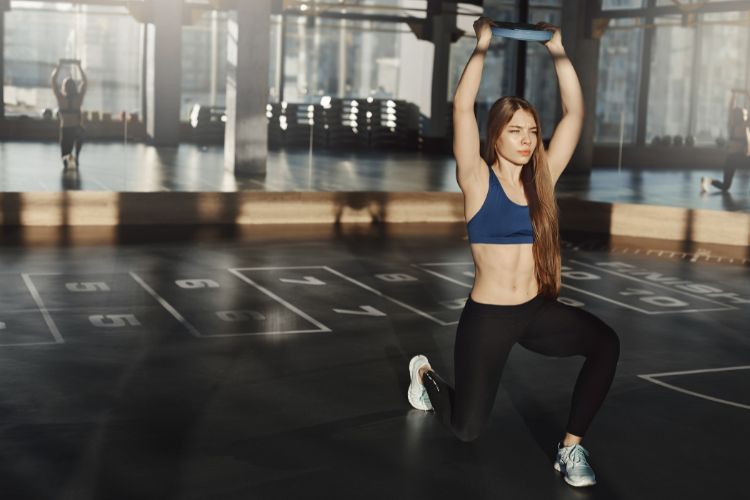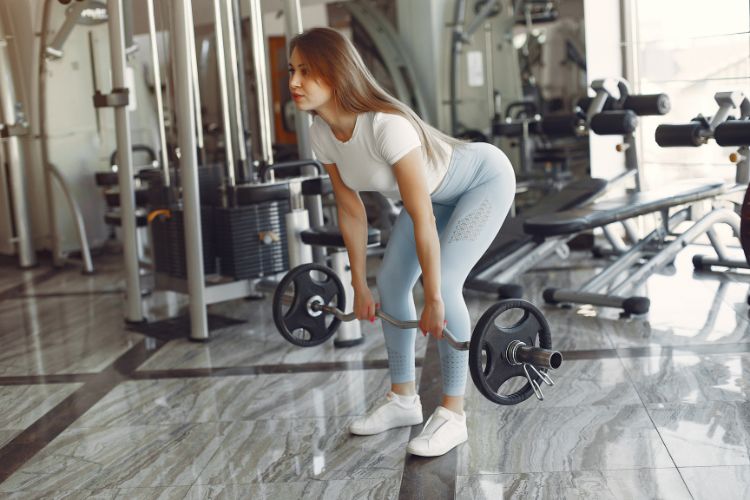Sign up for workout ideas, training advice, reviews of the latest gear and more.






When it comes to fitness, there’s no one-size-fits-all approach. Everyone has unique goals and personal benchmarks. But if you’re looking to add variety, intensity, and fun to your workout routine, jump training might be the game-changer you’ve been searching for. Especially tailored for women, this article dives into the world of jump training, exploring its benefits, and offering some actionable steps to get started.
Jump training, often referred to as plyometrics, involves exercises that require muscles to exert maximum force in short intervals of time, with the aim of increasing power (strength and speed). Initially developed for Olympic athletes, plyometrics utilizes the stretch-shortening cycle of the muscles to enhance muscle power.
Strength and Bone Density: As women age, they naturally lose bone density, increasing the risk of osteoporosis. Plyometrics not only enhances muscle strength but can also help in improving bone density.
Caloric Burn and Weight Management: Jump training is intense. And with intensity comes a higher caloric burn. This makes plyometrics an excellent choice for those looking to shed some extra pounds or maintain their current weight.
Agility and Flexibility: Want to improve your coordination, reflexes, and overall flexibility? Plyometrics can help. The dynamic movements associated with jump training promote agility, making everyday activities easier and reducing the risk of injuries.
Mental Health and Confidence: The feeling post a plyometric workout is exhilarating. The release of endorphins (feel-good hormones) not only boosts your mood but also instills a sense of achievement and confidence.
1. Warm-up: As with any workout, begin with a good warm-up. A 10-minute brisk walk or light jogging can get your heart rate up and prepare your muscles for the intense session ahead.
2. Start Slow: If you’re new to plyometrics, ease into it. Begin with basic exercises like jump squats or box jumps, and gradually increase the intensity and complexity of the exercises.
3. Use Proper Footwear: The impact from jumping can be tough on your joints, especially the knees and ankles. Ensure you’re wearing supportive, cushioned footwear designed for high-impact activities.
4. Focus on Form: It’s easy to get caught up in the excitement and forget about form. However, proper form is essential to prevent injuries and maximize benefits. If unsure, consider hiring a personal trainer or joining a plyometric class.
Jump Squats: Stand with your feet shoulder-width apart. Lower into a squat, and then explosively jump upwards. Land softly and immediately go into the next squat.
Box Jumps: Using a sturdy platform or box, stand in front of it with feet hip-width apart. Lower into a slight squat and then jump onto the box, landing softly. Step back down and repeat.
Burpees: Begin in a standing position. Drop into a squat position with your hands on the ground. Kick your feet back, placing yourself in a plank position. Quickly return your feet to the squat position and explosively jump up.
Skater Jumps: Start by standing on your right foot with your left foot lifted. Jump to the left, landing on your left foot while your right foot lifts behind your left ankle. Immediately jump to the right, replicating the same motion.
Tuck Jumps: From a standing position, jump up as high as you can while tucking your knees into your chest. Land softly and immediately jump again.
While jump training offers a myriad of benefits, it’s crucial to listen to your body. Ensure you incorporate rest days to allow your muscles to recover. If you experience pain (beyond typical muscle soreness), consider consulting a fitness professional or physician.
Building on the foundational knowledge of jump training, let’s explore some advanced techniques and insights that can help women unlock their full potential.
A strong core is crucial for jump training. Your core muscles, which include the abdomen, obliques, and lower back, are the powerhouses of your body. They offer stability, balance, and power – all vital for plyometric exercises.
Enhancing Core Strength for Plyometrics:
Planks and Side Planks: These exercises are perfect for strengthening your core. Start with a 30-second hold and gradually increase your time.
Russian Twists: Sit on the floor with your knees bent. Lean back slightly, ensuring your back is straight. Holding a weight or medicine ball, twist your torso to the right and then to the left. This exercise targets the obliques.
Mountain Climbers: Start in a plank position. Bring one knee towards your chest and then quickly switch to the other knee. This not only boosts core strength but also enhances agility.
Jump training typically encompasses three phases:
Eccentric Phase (Loading): This is the pre-stretch or the winding up phase. It’s the squat before the jump or the brief moment you coil your legs before leaping.
Amortization Phase (Transition): This is the shortest phase, the transition between the eccentric and concentric phases. It’s that split second when you change direction from downward to upward in a jump.
Concentric Phase (Takeoff): This is the explosive phase where all the stored energy is released, propelling you off the ground.
Understanding these phases is vital. The shorter the transition time between the eccentric and concentric phases, the more power you’ll generate.
For those looking to up their plyometric game, adding resistance can be beneficial. This can be achieved using:
Weighted Vests: These add additional weight, making the exercises more challenging, and thus increasing strength and power.
Resistance Bands: Bands can be used in exercises like jump squats to increase resistance during the upward phase.
However, it’s essential to ensure the added resistance doesn’t compromise your form or lead to injuries.
Given the intensity of jump training, recovery is paramount.
Stretching: Post-workout, engage in dynamic stretching to help relax the muscles and enhance flexibility.
Hydration: Drink plenty of water. Hydration aids muscle function and recovery.
Nutrition: Consume a balanced meal post-workout. Incorporate proteins to repair muscles, carbohydrates to replenish glycogen stores, and fats for overall cellular function.
Supplements like protein shakes, BCAAs (Branched Chain Amino Acids), and Omega-3s can be beneficial. However, always consult with a nutritionist or doctor before starting any supplementation.
Beyond the physical benefits, jump training offers a psychological edge. The sheer effort required in plyometrics pushes you out of your comfort zone, fostering mental resilience. Overcoming the challenges of jump training can translate to increased confidence in other areas of life, be it personal or professional.
Jump training, with its myriad benefits, can be a transformative addition to any woman’s fitness regimen. Whether you’re looking to tone up, enhance agility, or simply inject some fun into your workouts, plyometrics offers it all. Remember, while it’s essential to push boundaries, safety should never be compromised. Listen to your body, seek expert guidance when necessary, and enjoy the journey to a stronger, more agile, and confident self.
Stay up to date on the latest women’s health, fitness and lifestyle trends and tips.